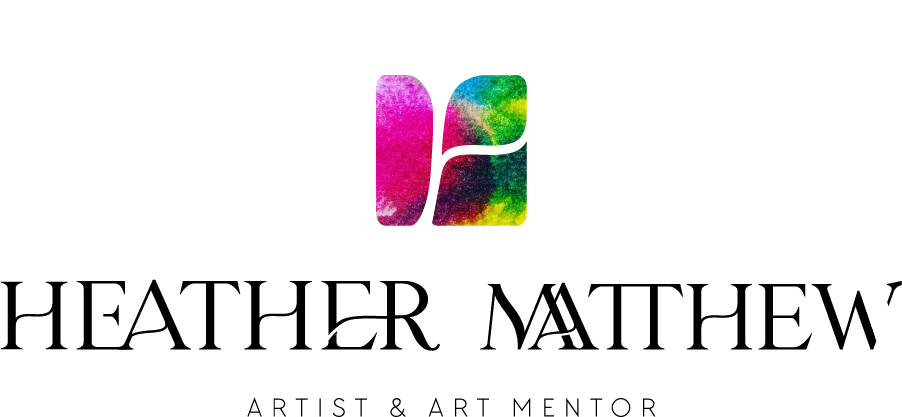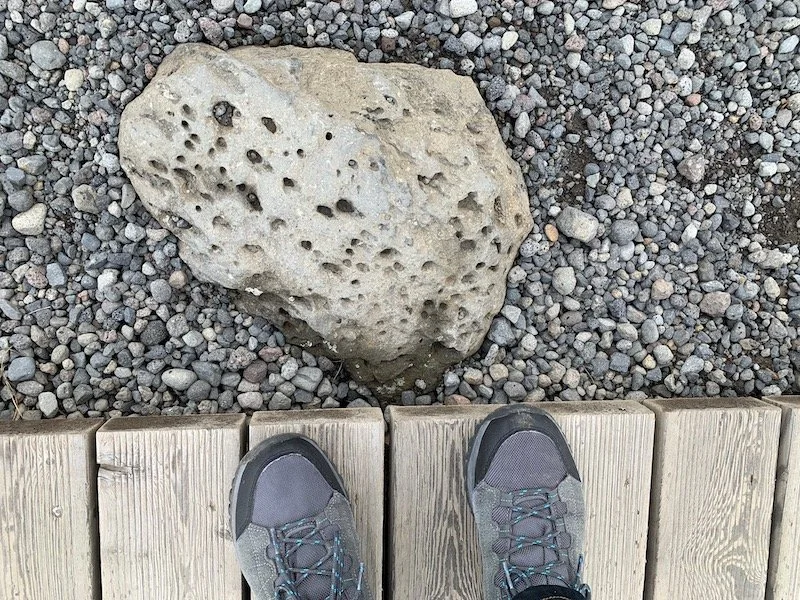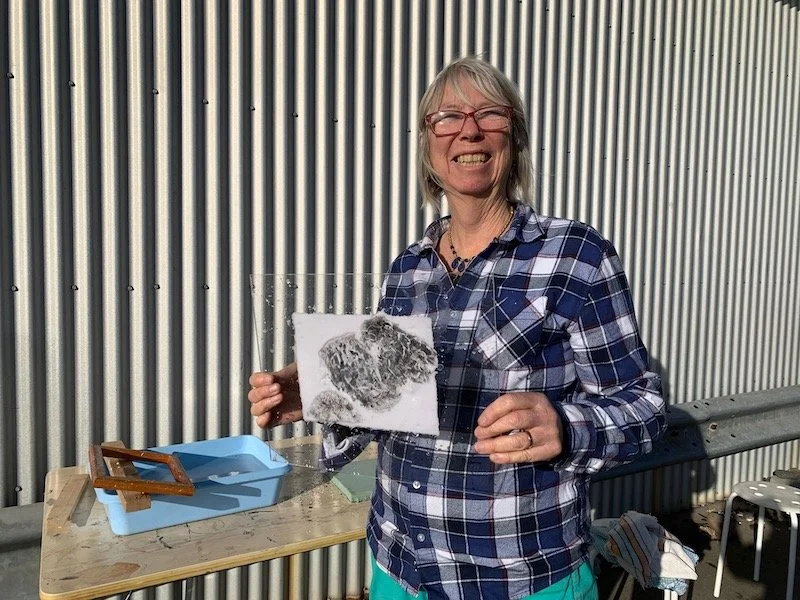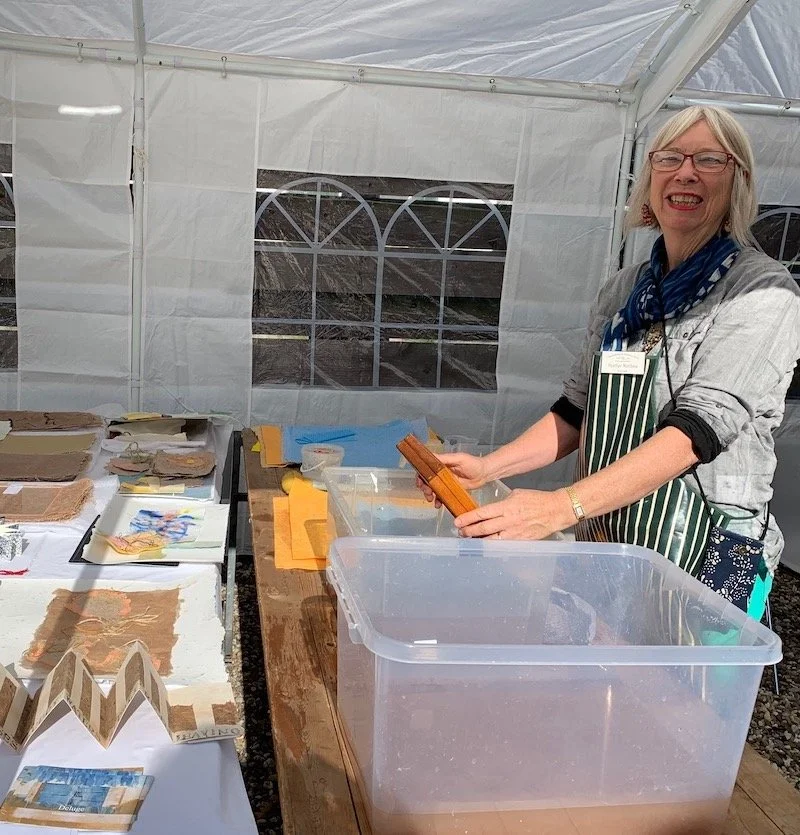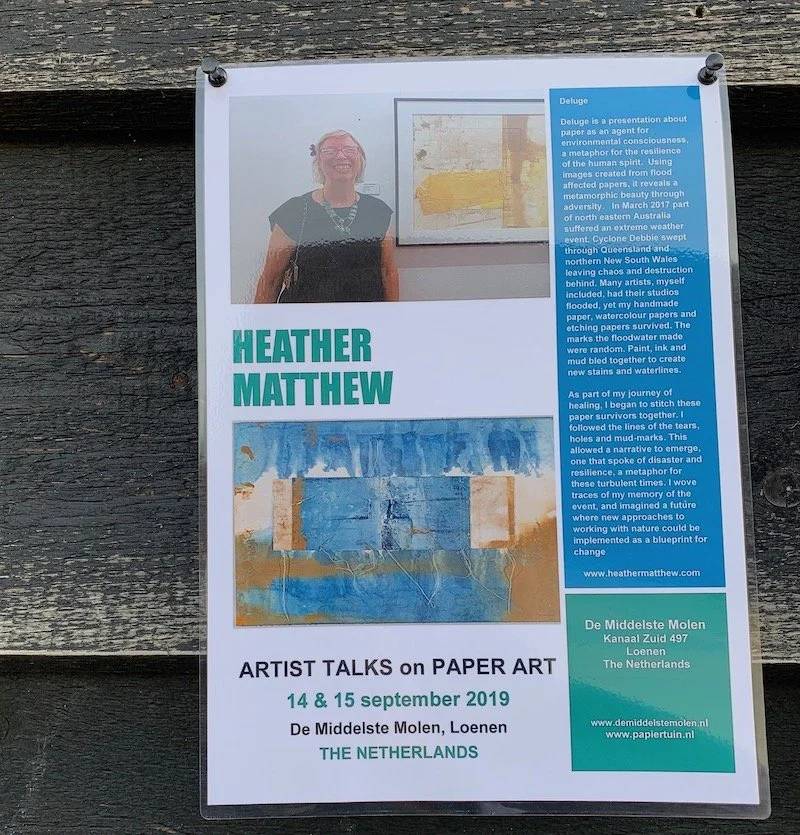Residencies: Part One
Fascinated by Iceland’s rocks 2019 - it’s the subject of my upcoming residency 2022
Making paper “glaciers” and rocks at Nes artist residency, Skagaströnd, Iceland, 2019.
I was asked the other day about how do you go about getting a residency? How do you know what to apply for and how do you prepare for it one once your application is successful. I thought I could address this in two separate blogpost. So this is part one, the application process. Part two the preparations I will write next week as I finalise packing and preparations before heading off to London.
I love to travel. There are some places in the world which are on my bucket list to see and some special places I will try to return to. Iceland fits both categories. In early 2019 I read about a residency in Iceland and thought how wonderful it would be to go to this small island which touches the Arctic circle. I signed up to receive their newsletters, then forgot all about them. I had an exhibition on in March of my flood marked papers and a papermaking residency in Central Australia I was going to attend in April.
While in Central Australia I read about a papermaking exposition in the Netherlands which was being hosted by two IAPMA e.V. members (International Association of Hand Papermakers and Paper Artists). They were asking for people to give talks and demonstrations. I sent a quick email asking for more information and received an email back the next day. So the conversation began. There was a possibility that selected artists might be able to give a talk at the local museum which would be a paid gig. I was interested.
My proposal was to talk about the paper artworks which I had just exhibited, with mud and flood water marks that has survived a flood. This proposal was accepted and my husband and I were offered billeted accommodation with one of the organisers. I booked our tickets.
A few months went by and into my email popped the NES newsletter from Iceland. It was a last minute call out for a winter residency in Iceland at a reduced price, starting in October. I calculated that I was going to be in the Netherlands in September and could apply. My application was based around water as rivers, snow and ice. I never thought I would be successful.
Not long after they wrote back with some questions. Was I applying for two weeks or a month, what if there was no snow? I couldn’t believe it, we were having a conversation about my proposal and so I opted for a month residency which could adapt to the weather conditions. I got it. I rebooked my return ticket and started preparing….
There were three components in each application processes that were similar:
1. Preliminary research about place and organisation
2. How my own art practice and artworks would fit
3. Creating an artist statement that married the two components together
Preliminary research: where is the place located and what is the feature of that place?
· In Iceland the residency was by the sea with a studio in an old fish packing factory.
· In the Netherlands the demonstrations were being held at a historic European papermill
· In Central Australia the residency was at a working cattle station in the red desert.
My arts practice: as a papermaker my practice involved transforming fibre and water into paper. I had created artworks about mud marks on paper after my studio was flooded. My practice included an awareness of climate change, of resilient paper and how paper can be used to tell stories of human s and nature interact.
Artist statement: how does my art practice fit with the location?
Central Australia: my application was about bringing papers made in the tropics, (ie banana paper) to Central Australia and immersing them in the red desert sands to create a story about human occupation and make a “wagga” rug from these papers.
Netherlands: my application was to demonstrate how to make banana paper – which is not made in Europe because bananas are grown in warmer climates. My talk would be about how the flood mud marked my papers but they survived and were resilient.
Iceland: my application was about making paper with melted ice and snow to embed the essence of the landscape into the paper and respond to the fishing village. I would use snow (if available).
I continue to use this three pronged approach to writing residencies – the next two residencies in the Outer Hebrides and in East Iceland are both about stones and rocks as repositories of stories, as features of the landscape, as indicators of climate change through rock tsunamis as the permafrost melts. For both residencies I will take my handmade papers to use while there. It will be a time of deep immersion in a place where experimenting and responding to the landscape are key. I’m excited to see what will emerge…
Demonstrating banana fibre papermaking at de Middelste Molen in the Netherlands, 2019
The poster for my talk - I later gave the same talk at the town’s museum
